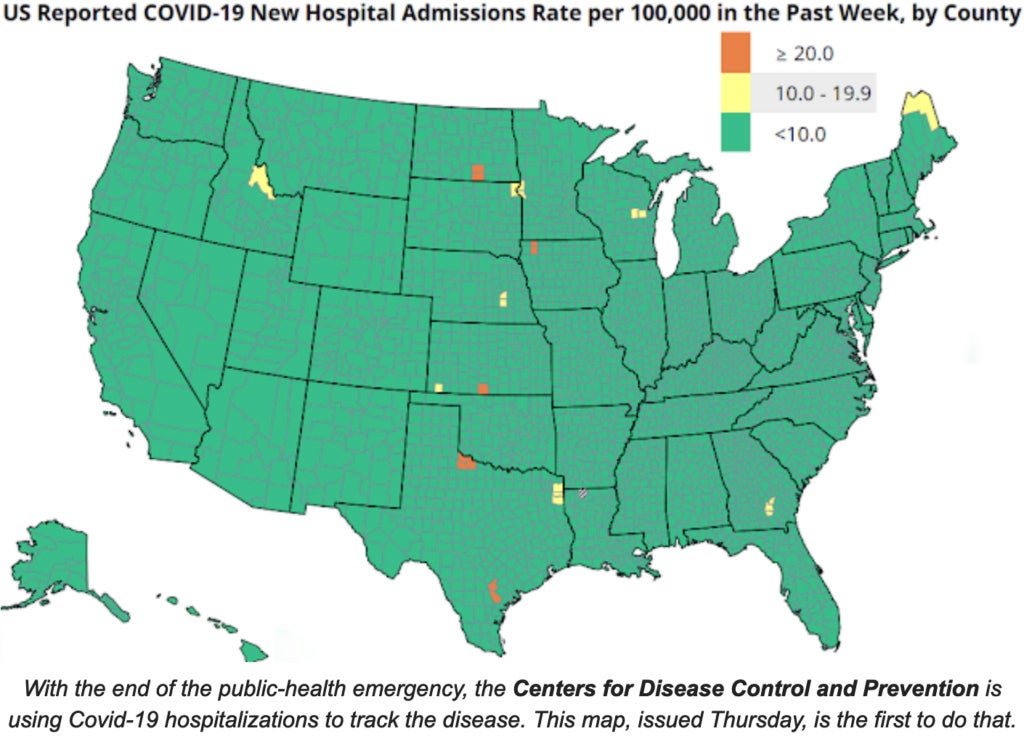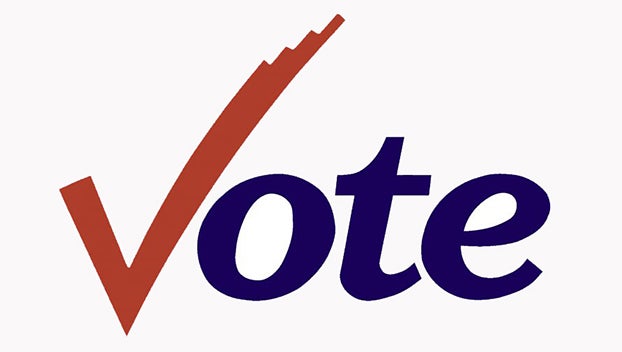Changes in Covid reporting come with end of emergency
Published 11:34 am Tuesday, May 16, 2023
BY AL CROSS
Kentucky Health News
Mostly green maps have become a symbol of the decline of the Covid-19 pandemic. With the end of the national public-health emergency on Thursday, Kentucky remains fully green on the new federal map that tracks Covid-19 hospitalizations, now the leading way to track the disease. The previous map, which estimated risk levels for each county, also showed Kentucky all green.
That was “a pretty special way to end” the emergency, Gov. Andy Beshear said at his weekly press conference Thursday.
Covid-19 remains a threat, says Health Commissioner Steven Stack, but with the combination of immunization through vaccination and infection, “Humanity as a species has enough immune exposure to this virus that hopefully now it is something we can live with . . . if you do the things we’ve recommended.”
Those things include vaccination, staying home if you are sick, wearing a mask if you have respiratory symptoms, and getting tested promptly for Covid-19, Stack and other physicians said.
“You never know who you’re sitting next to that you could make sick,” said Dr. Ashley Montgomery-Yates, chief medical officer at the University of Kentucky‘s Good Samaritan Hospital.
“There’s a lot more Covid out there right now than is being reported . . . but we don’t see nearly as much of the pneumonia” and other serious conditions caused by the disease, said Dr. Mark Dougherty, a Baptist Health infectious-disease specialist and epidemiologist.
Dougherty said most epidemiologists “think we will see a surge this summer . . . but I think we’re gonna be able to handle it and deal with it.” He cautioned that the end of weekly, county-by-county reporting of Covid cases means that hospital admissions for the disease will be the main warning sign of a surge.
The Centers for Disease Control and Prevention will publish weekly reports of hospital admissions. The state, which attributes deaths to Covid-19 or other causes, will publish mortality data monthly rather than weekly, Stack said. The state’s Covid-19 website will be replaced with one covering all respiratory illnesses, he said.
One major change will be the cost of Covid-19 tests.
“At-home tests will be available in drugstores, but at $12 to $15 apiece, they’ll be an expensive first step for people worried about their symptoms,” writes Melissa Healy of the Los Angeles Times. “The more reliable and time-consuming PCR tests will be subject to insurers’ rules and copays.”
Despite those costs, Dougherty emphasized the importance of early testing for Covid-19 because the main treatment for it, Paxlovid, must be used in the first five days of infection to be effective.
Dougherty said testing can be unreliable early in the illness, even on the first two tests, but said it is important to get tested early because Paxlovid has to be used in first five days to be effective. He said people who suspect they have Covid-19 should monitor their oxygen level, and if it falls below 94% consistently, talk to a health-care provider.
He said many people can’t take Paxlovid due to interactions with other medication they must keep taking, and the alternative is Remdesivir, which is given intravenously, normally for three days, five if the disease becomes more serious. Monoclonal antibodies, which were once effective and widely used, no longer work for prevention or treatment of Covid-19, Dougherty said.
Antiviral medications may now require a co-payment, Healy reports. She notes that the federal government “will ensure Covid-19 care at commercial pharmacies and federally funded health centers that serve low-income communities, and through local public-health organizations. The same program will also hold some drug manufacturers to their public commitments to provide vaccines and treatments free of charge for the uninsured.”







